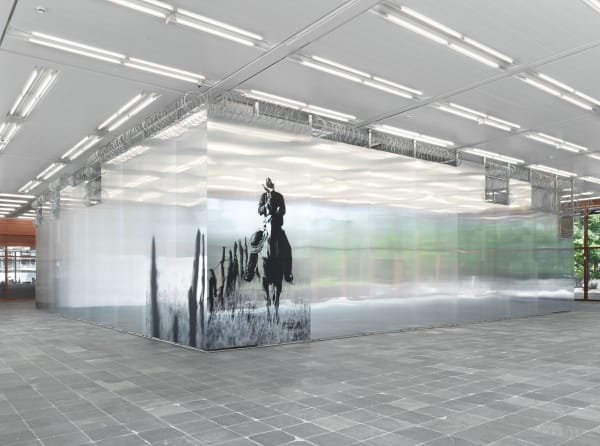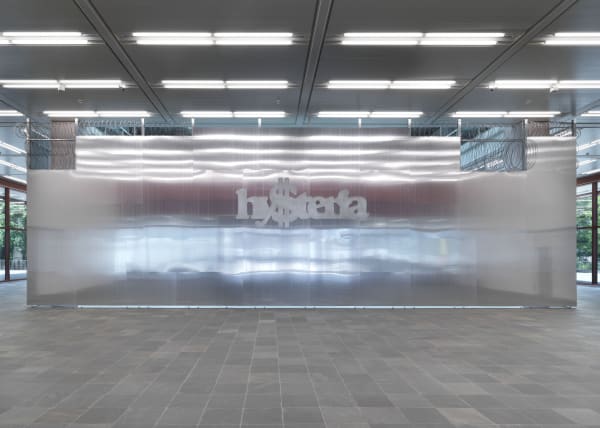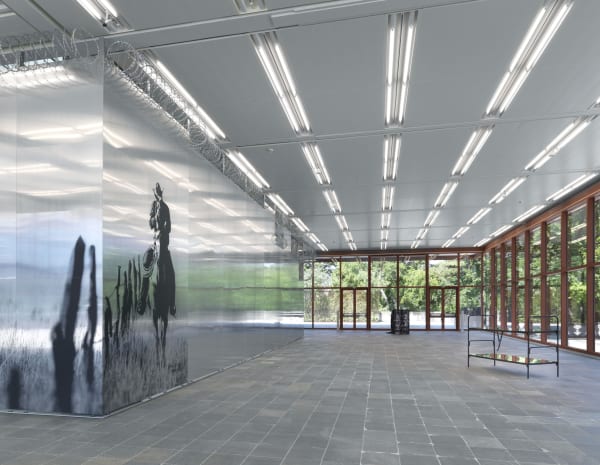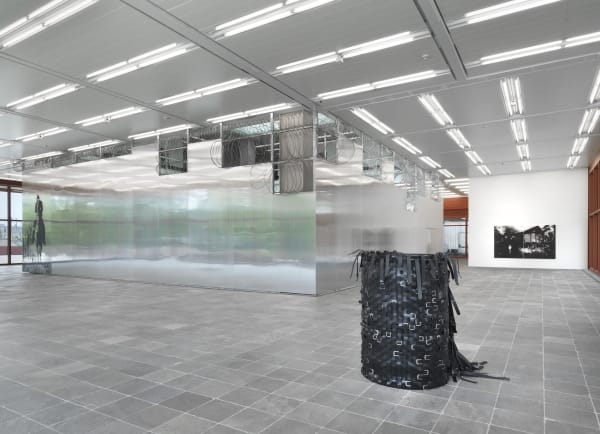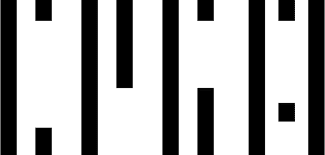I Cannot Hide My Anger comprises 112 aluminum sheets that surround the inside of the exhibition space (over 1,600 m³) and make it inaccessible to visitors. The empty center thus becomes a negative space. In her site-specific installations Monica Bonvicini explores the psychology of space and institutional critique. In the process she radically lays bare familiar narratives in art history and other cultural areas, calling into question outdated social perceptions. Since the mid-1990s the artist has been investigating political, social, and institutional conditions and their impact both on society and on the conditions of artistic production. At the heart of her work we find subjects such as architecture, gender roles, control mechanisms, and dispositifs of power, as well as how these behave in relation to one another. Bonvicini works across media with installation, sculpture, drawing, video, and photography. In her artistic practice she is considered direct, merciless, and political.
Her characteristic dry humor is demonstrated in the very first work that the visitors to the Belvedere 21 see when they approach the cubical structure: Hy$teria is a piece that explicitly uses language as a material, critically reflecting on and questioning it. With a single word and by merely replacing the “s” with a dollar sign, Bonvicini opens up a vast discursive and political space and alludes to the frenzied state of the art market and consumer society in general.
The black-and-white drawing Wildfire Kern 2010 analyzes the connection between global warming and natural catastrophes. The picture shows a house left in ruins after a fire or hurricane. This work is particularly relevant in the face of the regressive politics, denial tactics, and ignorance demonstrated by some national governments. An individual social tragedy is depicted against a backdrop of global political decisions.
Other works featured in the exhibition are Flagging Down Up All Night and Marlboro Man, a print which reflects on the romantic and stereotypical male figure of the strong, freedom-loving cowboy. Is this figure an icon of the past or has the Trump era brought back this ideal of masculinity? Bonvicini portrays the cowboy near barbed wire, thereby combining this reactionary male stereotype with similarly resurrected right-wing ideologies that are driving geopolitical divisions by building walls and borders. This subject is also referenced by the walls of the aluminum cube I Cannot Hide My Anger.
The choice of materials plays a significant role in this exhibition. Like in Double Trouble, a sculpture consisting of a metal bunk bed in which the mattresses have been replaced by three mirrors and a leather belt, the aluminum walls of I Cannot Hide My Anger also have a reflective property: they generate distorted, fragmented, and unpredictable reflections of the artworks and the visitors. The current selfie trend is thwarted: on the surfaces the audience finds only vague similarities with their shadows alongside atmospheric displaced light and color that resemble a vehicle racing down a highway in Los Angeles at night.
Curator: Axel Köhne

